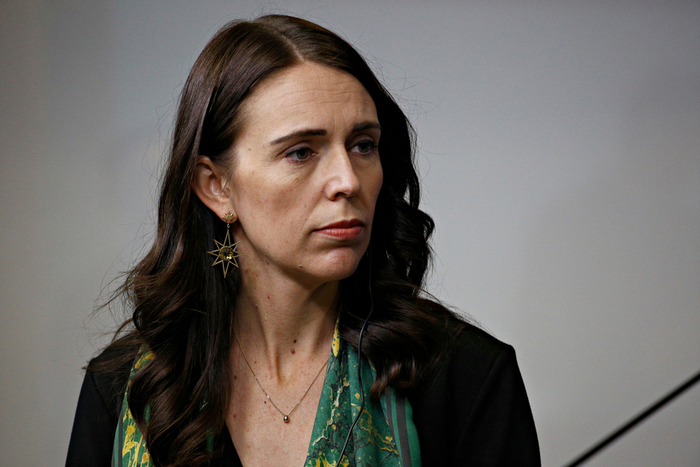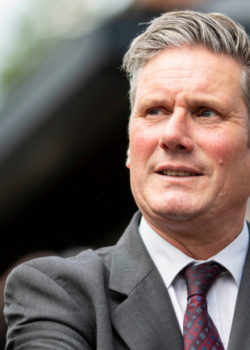A leader’s key weapon in battling any crisis is exceptional communication. The Mandarin word for crisis, “Wei Ji”, combines two characters (危 机): danger and opportunity. How a business leader manages and communicates will determine which character takes prominence.
Exceptional communication is crucial to survive, stabilise and surge towards post-crisis opportunities. Covid-19 is the biggest crisis of our lifetimes—and leaders must provide quality communications to secure their lines of effective engagement right now.
I’ve watched hundreds of global leaders talk about this crisis. In particular, two stand out as role models in utilising three key principles for effective crisis communications that I have highlighted in my research and practice during the past two decades. They are New Zealand Prime Minister Jacinda Ardern and New York Governor Andrew Cuomo. They’re not perfect—no one is—but they stand out as very effective leader communicators, providing tutorials for business leaders.
The good news is that effective crisis leadership communications can be practised. The bad news is that in the maelstrom of trying to keep a business alive, giving time and effort to communications is often deprioritised.
Effective communication does not replace critical crisis actions when it comes to securing the health of people or the business, cash and operations. But communication becomes leverage to make these real and relatable to your vital stakeholders—especially employees and customers.
Checklist one: golden rules for crisis messaging
• Acknowledge the problem (or issue).
• Express empathy.
• Explain the actions.
These three messaging rules must be part of every piece of communication throughout the crisis. If you can’t explain the actions, then explain the process you are using to find the answers. In leadership crisis communications, implement these rules as soon as you can.
During every press conference, Cuomo utilises the three rules to support his message: “Stay Home. Stop the Spread. Save Lives.” This follows the sequence: “action, problem and empathy”. His dialogue is authoritative, demonstrating command of issues and facts; his actions and voice show deep personal commitment and resilience.
Likewise, when Ardern addressed her island nation when it moved to the highest restriction levels, she said: “We currently have 102 cases. But so did Italy once. Now… hundreds of people are dying every day. The situation here is moving at pace, and so must we.”
Checklist two: overcommunicate credibly
Throughout the crisis, it is much better for your people to receive communication updates in frequent, short bursts. Relying on long, infrequent communication exchanges causes three problems: information overload; increased feelings of isolation or uncertainty; and rumours that fill the vacuum.
You can meet the different intellectual, emotional and psychological stakeholder communication needs by remaining:
- Clear (short and to-the-point messages): See Ardern’s three-sentence action call: “What we need from you, is to support one another. Go home tonight and check in on your neighbours. Start a phone tree with your street.” She reinforced her personal commitment with nearly daily live stream messages of encouragement from her home—sometimes even sitting on her bed.
- Credible (stay with the facts): Provide transparency with reassurance. Cuomo reiterated that the lessons being learned in New York would be shared with other states. He always shows key data and demonstrates he trusts scientific advice. While he offers personal opinions, he repeats, “Follow the data and the science.” Ardern also cites numbers—using simple and clear graphs to get her message about urgent action and “flattening the curve” across.
- Consistent (communicate frequently): Provide sharp updates on progress. Explain what’s changing, why new moves are needed, and give evidence. In both leaders’ communication, we see regular attention to providing the number of cases, tests, recoveries and deaths. Policies change as the crisis has deepened, but each includes explanations as to why a change is needed—backed by science; and is expressed empathetically.
Checklist three: make it meaningful
Make messages relevant to your stakeholders’ situation. Keep core messages short, accessible and interactive. Be prepared to answer, or anticipate, questions. Your objective is to help people understand what is happening and why, but leadership is also about being a beacon of hope and inspiration when there is fear and uncertainty. Showcase yourself as a leader of competence, composure and clarity to exemplify how and why we will get through this together. Avoid unsubstantiated wishful thinking.
Messages are powerful when they are meaningful, personal and provide concrete stories or actions. New Zealand’s culturally diverse people emphasise close-knit community connection and inclusiveness.
Ardern showed this when announcing the easing of restrictions in April: “I still get a phone call for every individual person we lose to Covid-19. We may be amongst a small number of countries where that is still able to happen… every number is someone’s father, someone’s mum, a relative and a friend and someone we have all been united in an effort to protect and to save.” Earlier, she declared the “Easter Bunny” an essential worker during lockdown—a human touch, at a time of pain.
Cuomo taps right into the cultural ethos of New Yorkers. He talks of everyone being “New York tough”. With a plain-speaking, yet distinctive accent, he frequently cites examples of New York rising from the 9/11 and 2008 financial crises—to foster the idea of people and businesses returning to a better future. He often uses quirky personal statements. For example on the need to share resources, he quipped, “If I have to get in the truck and drive it, I will.”
This matters to you
If you think these principles are most relevant to political rather than business leaders, think again. I’m watching lots of leaders and those doing it right and wrong will be the subject of post-Covid-19 research articles or case studies.
Microsoft CEO Satya Nadella provided an effective example during a CNBC interview. He began by expressing his “sympathy” for everyone impacted by coronavirus and a “big thank you” to the healthcare workers “helping us get through this”. First priority was the “safety of their employees” and their reliance on science and guidelines to make that happen.
He acknowledged the nature of the problem, connecting the dedication of his people to a theme of “coming together as a global community”. Their role was as “the digital first responders to all the first responders”. He clearly explained the actions being taken to support customers’ critical needs for technology infrastructure. He cited Microsoft’s Healthcare Bot partnership with the CDC. Throughout he was clear, meaningful and credible.
In a BBC interview, Daimler CEO Ola Källenius, although totally different in style, still applied effective principles. In response to the opening question, he replied: “We have two priorities: first and foremost, the health and safety of our employees around the world.” He described Daimler’s work on this from China to Europe and the US. Only then did he mention the second priority: “the health of the company”.
He progressively explained actions being taken to help employees, and manage cash and supplies. He gave examples of Daimler staff donating masks from car paint shops to healthcare workers.
As business leaders, your people look to you in a time of crisis. Using simple, heartfelt and frequent communications will go a long way towards helping them cope and maintain hope. Your people will follow—if they are informed, involved, and feel inspired through effective leadership communication to do so.
Ian C. Woodward is professor of management practice in organisational behaviour at INSEAD, specialising in leadership and communication.
This article first appeared on INSEAD Knowledge and is reproduced with permission. Read the original article.





